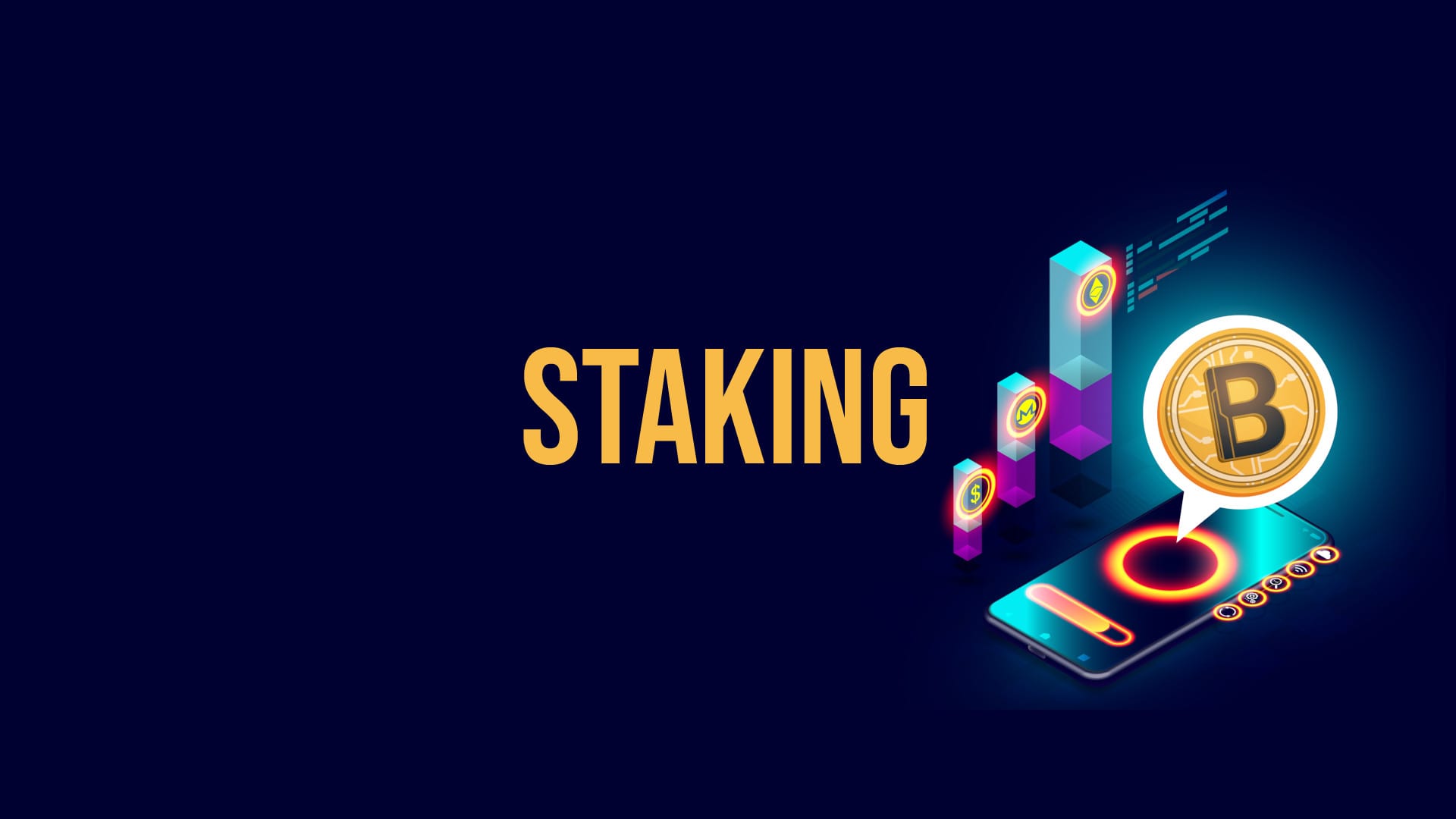Introducing our new AI-powered NFT creator
Creating NFTs has never been easier and fun!

What is Staking?

Martin Souto Parga
May 2, 2023
NFTs have gained significant attention in recent years as a unique form of digital ownership that represents ownership of a digital art, collectibles, virtual real estate, and more. NFTs are built on blockchain technology, which provides transparency, security, and decentralization. One emerging trend in the NFT space is staking, which allows NFT holders to lock up their assets for a period of time in exchange for various benefits. In this article, we will explore the concept of staking NFTs and how NFT projects can utilize staking.
Definition of staking
Staking, in the context of NFTs, involves locking up NFT assets for a specified period of time in a smart contract or a designated wallet, in return, NFT holders may receive rewards or incentives, which can vary depending on the NFT project´s specific implementation.
How does it work?
Staking usually involves a few steps:

1- Lock up NFT assets
NFT holders need to lock up their NFT assets for a specified period of time, as determined by the staking program or NFT project. This typically involves transferring the NFTs to a designated wallet or smart contract, which holds the assets for the duration of the staking period.
2- Participate in the project's decision making
Some NFT projects offer their holders the opportunity to participate in the decision making process allowing them to vote on how the project should move forward.
3- Earn rewards or incentives
In exchange for staking their NFTs and contributing to the network, NFT holders may receive rewards or incentives. These rewards can vary, and may include additional NFTs, tokens, or other benefits as determined by the staking program or NFT project.
Why should you use staking?
1- Community Engagement
Staking NFTs can be used as a powerful tool to engage and incentivize the community of NFT holders. By offering rewards or incentives for staking, NFT projects can encourage holders to actively participate in the network´s operations or governance, creating a sense of ownership and loyalty among the community. This can help foster a strong and engaged community that is invested in the success of the NFT project.
2- Liquidity and Trading Volume
Staking NFTs can also be utilized to support the liquidity and trading volume of NFT marketplaces. Some NFT projects offer staking programs where NFT holders can stake their assets in exchange for a share of the marketplace´s transaction fees. This can incentivize NFT holders to keep their assets staked and actively participate in the marketplace, creating a more vibrant and active trading environment.
3- Price Appreciation and Value Gain
Staking NFTs can provide an opportunity for NFT holders to benefit from potential price appreciation and value accrual of the underlying assets. By locking up NFT assets for a certain period of time, NFT holders may be eligible for rewards, such as additional NFTs or tokens, which can potentially increase the value of their holdings. This can create an additional incentive for NFT holders to stake their assets, as they can potentially earn additional value over time, beyond the initial purchase price of the NFTs.
4- Governance and Decision-Making
Staking NFTs can also be used as a mechanism for governance and decision-making in NFT projects. Some NFT projects may allow staked NFT holders to participate in the decision-making process, such as voting on proposals or participating in community governance. This can give NFT holders a sense of ownership and influence over the direction of the NFT project, allowing them to actively participate in shaping its future.
5- NFT Project Sustainability
Staking NFTs can also contribute to the sustainability of NFT projects. By encouraging NFT holders to stake their assets and actively participate in the network's operations or governance, NFT projects can ensure a stable and committed community that is invested in the long-term success of the project. This can help with the sustainability and growth of the NFT project over time, as staked NFT holders contribute to the project's operations and ecosystem.
6- Exclusivity and Utilities
Staking NFTs can also add utility and functionality to NFT assets. For example, some NFT projects may offer staked NFT holders access to exclusive features or content that is not available to non-staked NFT holders. This can enhance the value and appeal of the NFT assets, creating a differentiated experience for staked NFT holders and potentially driving demand for staking.
Want to add staking to your project?
With One Mint's new no-code staking solution, all projects can take advantage and use staking to improve their project's lifetime and possibilities. Interested in getting started with staking? Send us a message to discuss your needs.
Browse other posts